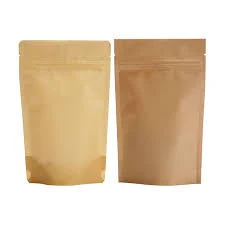- Afrikaans
- Albanian
- Amharic
- Arabic
- Armenian
- Azerbaijani
- Basque
- Belarusian
- Bengali
- Bosnian
- Bulgarian
- Catalan
- Cebuano
- chinese_simplified
- chinese_traditional
- Corsican
- Croatian
- Czech
- Danish
- Dutch
- English
- Esperanto
- Estonian
- Finnish
- French
- Frisian
- Galician
- Georgian
- German
- Greek
- Gujarati
- haitian_creole
- hausa
- hawaiian
- Hebrew
- Hindi
- Miao
- Hungarian
- Icelandic
- igbo
- Indonesian
- irish
- Italian
- Japanese
- Javanese
- Kannada
- kazakh
- Khmer
- Rwandese
- Korean
- Kurdish
- Kyrgyz
- Lao
- Latin
- Latvian
- Lithuanian
- Luxembourgish
- Macedonian
- Malgashi
- Malay
- Malayalam
- Maltese
- Maori
- Marathi
- Mongolian
- Myanmar
- Nepali
- Norwegian
- Norwegian
- Occitan
- Pashto
- Persian
- Polish
- Portuguese
- Punjabi
- Romanian
- Russian
- Samoan
- scottish-gaelic
- Serbian
- Sesotho
- Shona
- Sindhi
- Sinhala
- Slovak
- Slovenian
- Somali
- Spanish
- Sundanese
- Swahili
- Swedish
- Tagalog
- Tajik
- Tamil
- Tatar
- Telugu
- Thai
- Turkish
- Turkmen
- Ukrainian
- Urdu
- Uighur
- Uzbek
- Vietnamese
- Welsh
- Bantu
- Yiddish
- Yoruba
- Zulu
Understanding the Thickness Measurement of 20 Mils in Practical Applications
Understanding Thickness How Thick is 20 Mils?
When discussing measurements in terms of thickness, particularly in fields such as manufacturing, packaging, and design, you'll often come across the unit mils. But what exactly does it mean, and how do we visualize or comprehend a measurement of 20 mils?
What is a Mil?
A mil is a unit of measurement that is equal to one thousandth of an inch (1 mil = 0.001 inches). The term mil is commonly used in industries dealing with materials such as plastic films, coatings, and other layers where precise thickness is important. It is a more practical measure in these contexts than using decimal inches because it simplifies the expression of thin materials.
To better understand mils, it’s useful to know some context around them. For example, a standard sheet of paper is often around 4 mils thick while a credit card typically measures around 30 mils. Therefore, when we hear 20 mils, it can help to visualize this thickness against familiar objects.
Calculating the Thickness of 20 Mils
Having established that 20 mils is equivalent to 0
.020 inches, we can put this into perspective- Comparison with Everyday Items As mentioned, a standard piece of printer paper is approximately 0.004 inches thick. Thus, 20 mils is five times thicker than a standard sheet of paper. This comparison may help you visualize how robust a 20-mil material might be.
- Plastic Films and Sheeting In the context of plastic sheeting, a thickness of 20 mils is common for heavy-duty applications. This thickness offers durability and resistance to tearing, making it suitable for things like vapor barriers or protective covers in construction projects.
- Packaging Materials In the realm of packaging, 20 mils may be used in the production of certain bags, especially for heavy items or those that require a secure sealing to prevent damage during transit. These bags can withstand more stress compared to typical thinner versions.
how thick is 20 mils

Practical Applications of 20 Mils
Knowing the thickness of materials is vital in various applications
1. Construction In the construction industry, a vapor barrier may require a thickness of 20 mils as it prevents moisture intrusion—crucial in maintaining structural integrity.
2. Agriculture Heavy-duty plastic films, which are used for greenhouses or silage covers, often have a thickness of around 20 mils, allowing for adequate protection against environmental factors.
3. Manufacturing In manufacturing settings where precision is key, parts may require exact specifications in thickness. A mil-based measurement allows for the clear communication of requirements, ensuring that components will fit together as designed.
4. Protective Coatings Protective coatings that need to guard surfaces from elements might also be specified at 20 mils. This thickness is sufficient to create a barrier without being excessively heavy or cumbersome.
Conclusion
Understanding the measurement of 20 mils offers insights not only into its practical applications but also into its significance within various industries. The conversion of mils to inches (where 20 mils equals 0.020 inches) provides a clear perspective, helping professionals and consumers alike gauge the properties of various materials accurately.
When selecting materials or products, knowing the thickness can influence decisions regarding durability, protection, and suitability for specific tasks. Whether it’s in construction, packaging, or other manufacturing processes, the term 20 mils represents a tangible, reliable measurement that plays a crucial role in achieving fidelity and functionality in material applications.
In summary, 20 mils might seem like a simple measurement, but it embodies a wealth of practical knowledge across numerous fields. With such insights, one can make informed choices about materials, enhancing both product performance and project success.













